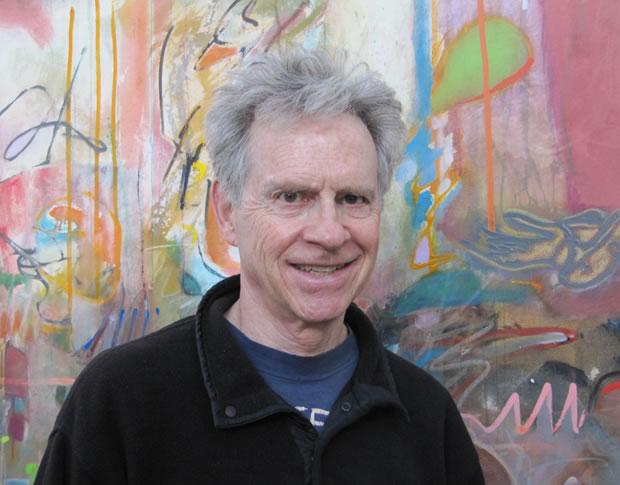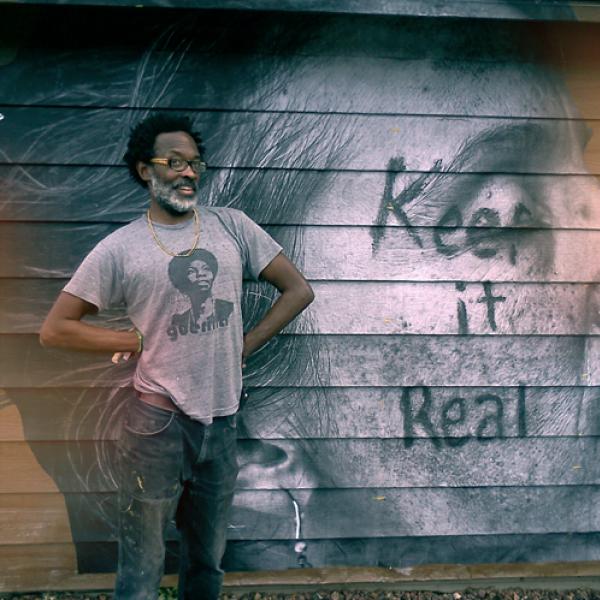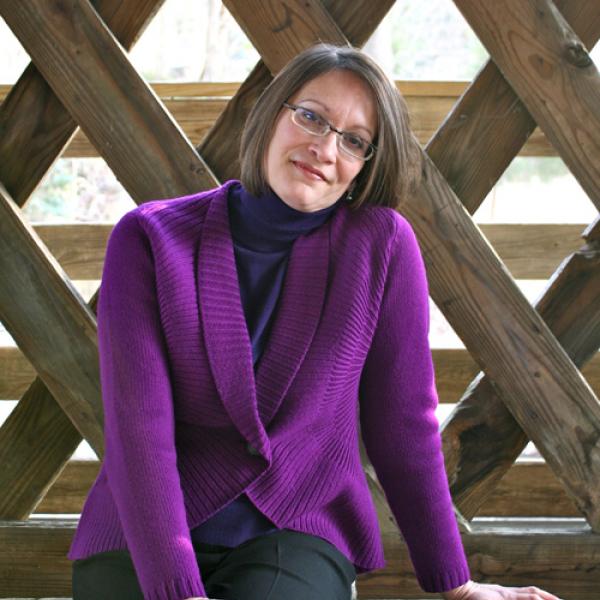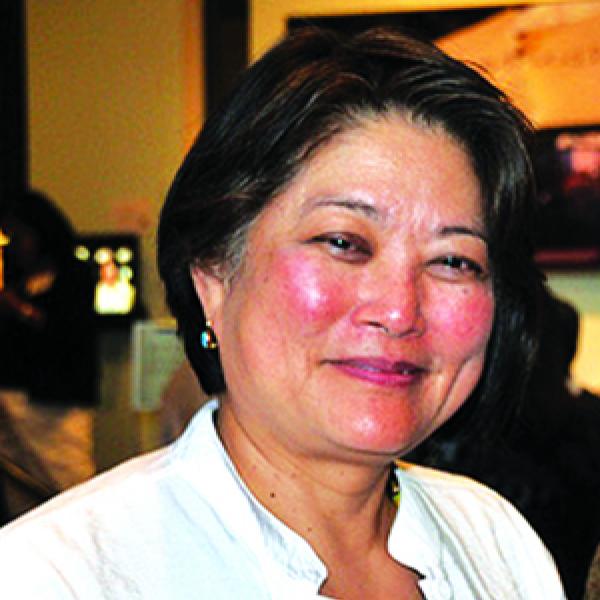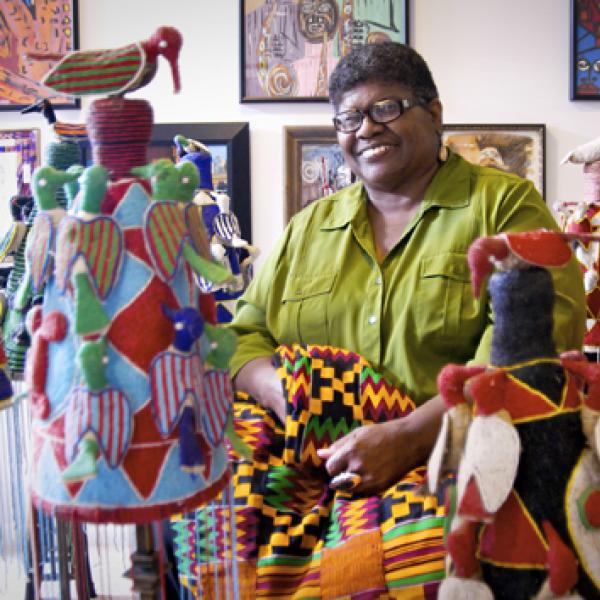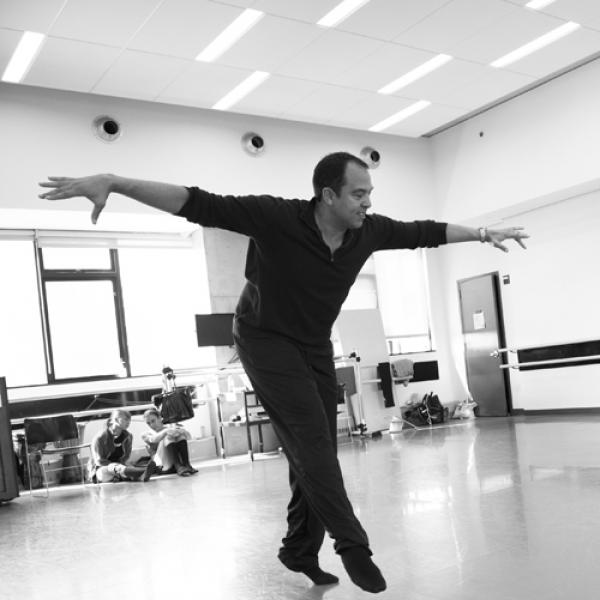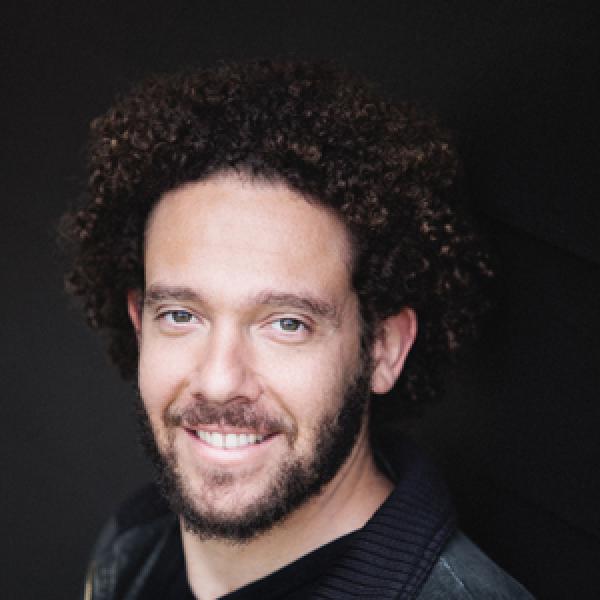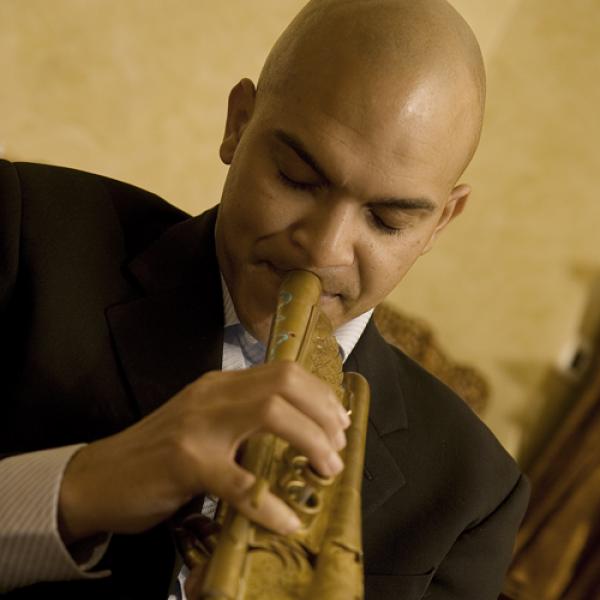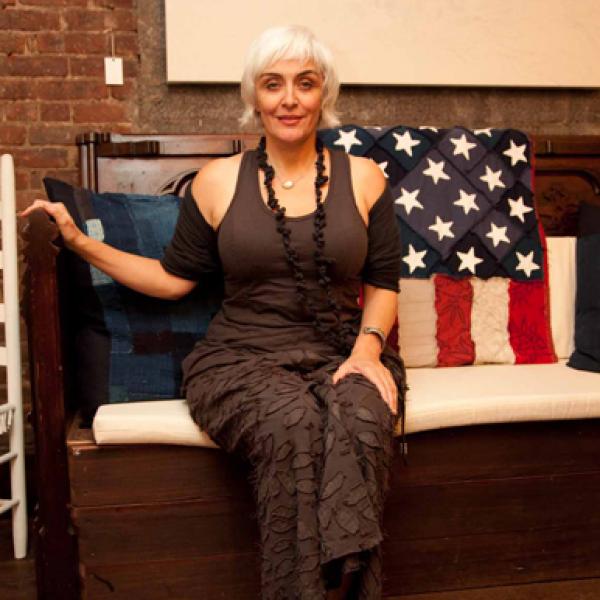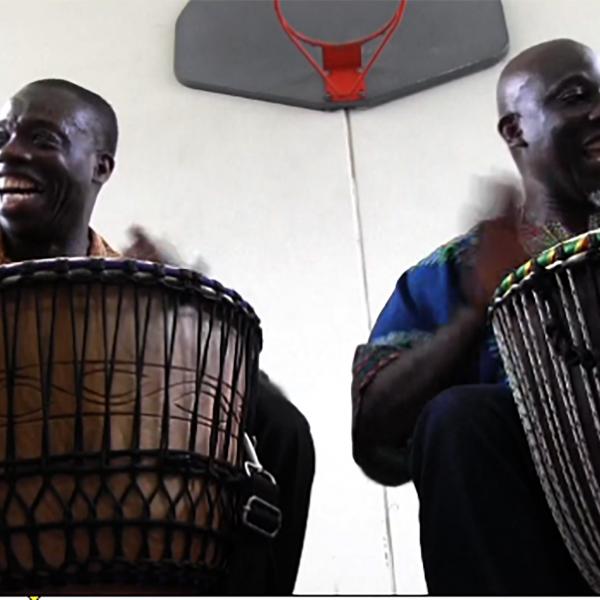From Utopia/dystopia:
Regarding narcotic sales in Skid Row, it strikes me as nearly impossible to get clean. The expression I hear is that the wolves are not only at the door, they're in the living room, said Captain Andy Smith, who commands the central division down town. Well Captain Andy, let me tell you something. All those service for the elderly, for the disabled vets, for the homeless, we got a safe haven, a women center, we're placed here by somebody. Skid Row didn't just happen by itself.
JO REED: That’s an excerpt from Utopia/dystopia, performed by the Los Angeles Poverty Department or LAPD. Does Skid Row have a culture? Artist John Malpede thought so and the LAPD has proven it. The LAPD is a theater group made up of people who live and work on skid row. Most of its membership have been homeless at one time or another. Founded by performance artist and director John Malpede in 1985, the LAPD uses theater and performance art to give a platform to the voices of the people of skid row. At the LAPD people create art, often collectively, about their challenges, concerns and accomplishments. For example, the piece we heard at the top of the show, Utopia/dystopia, addresses some of the bedrock concerns of the residents of Skid Row, John Malpede explains.
JOHN MALPEDE: Right before the real estate bust or the housing bust and all that we did a show called UTOPIA/Dystopia, which was again looking at whether you could create the new 21st century city, that is Los Angeles, on the backs of some people being on the short end of the stick, so it was called Utopia/dystopia. I mean in making the show we did a bunch of education events that brought really diverse people together to talk in a non-direct setting so it less contentious than usual, but everyone from police detectives and developers to housing activists and street musicians.
JO REED: While skid row is often a generic term for a part of town that’s down on its luck or where homeless people tend to congregate, in Los Angeles Skid Row an actual designated 52-block area. John Malpede
JOHN MALPEDE: It’s a special area because in the mid-seventies the mayor and the redevelopment agency decided to save the SRO housing in this one area near what had been the train station and so they zoned a 50-square block area to save the housing in that area and then ultimately to move other services into that area. So it’s created a situation where a permanent community could evolve and thrive, actually. So for every person on the street or in the transitional situation really 2/3 of the population are permanent residence of the neighborhood.
JO REED: John Malpede began his career as a New York performance artist— which is quite a leap to organizing theater projects with homeless people on the other side of the country.
JOHN MALPEDE: I think the winter going into 1984 was when I first started seeing scads of people sleeping on the street in downtown New York where I was living, so I decided to put two and two together and do something about homelessness. And then I happen to be in L.A. and it turned out L.A. was the so-called homeless capital of the world, and also there was a lot of political activity going on around homelessness at that time. There was a lawsuit coupled with community agitation around a habitability case, so there were people testifying about that, and I happened to go down to the hearing and then I met all these homeless people that had been organized and some of the lawyers that were connected with them and some folks from the Catholic Worker and all that, and then I started volunteering with them, and as a result I was able to write a performance that I did in New York that was both fairly hallucinated but extremely accurate about what was going on. I just found it very compelling, what these guys were doing. I thought sort of the multi-pronged level of their political tactics and also just in terms of my own satisfaction as a human being because like when you make art a lot of times it’s good for you but you don’t know if it’s good for anybody else. So I just found that suddenly I was interacting with a much bigger world of lawyers, homeless people, city councilmen, members of the police department, blah, blah, blah. It was just really cool and I really liked being able to insert myself in the real world to such a great extent. I started volunteering for these guys as I was writing my piece. So my job was to run around to every welfare office in L.A. County and see what people were getting, if they were getting what the law required and all that, and if not to report back to the lawyers plus help that individual.
JO REED: John wrote a grant and got funding from the California Arts Council to begin theater workshops on skid row…the question was: would anyone come?
JOHN MALPEDE:I was very skeptical as to whether anyone would show up. A lot of people showed up. It was a big surprise, but I think one crucial thing was that I was embedded in this community of people working in the community that had the trust of the community. So those guys taught me how to behave, number one, and I really was able to build on all that goodwill that those guys had. And I really did things very incrementally, obviously trying to asses where people were at and just sort of work the place where we could all intersect. Like I said, I myself had spent a lot of time in the welfare office and a lot of frustrating time. A lot of other people had done that, too, so sometimes we would play out those kinds of scenarios using the hidden voice of the welfare worker, the hidden voice of the client, so it would get pretty ribald and funny.
JO REED: Skid Row Los Angeles is the poorest area in the city, with the largest concentration of homeless people of any neighborhood in the US. Yet John Malpede believed that people in distress could use theater to create community.
JOHN MALPEDE: I came in there assuming that everybody was creative. Especially when you come from something like performance art you know about different kinds of leading-edge practice and stuff like that. You know that so much of it is very quirky stuff. Well, quirkiness isn't limited to people who went to art school, and so I always was convinced that people would have as interesting things to say as anybody else if they had the opportunity to say them. And what happened at the beginning of LAPD really was a lot of people showed up with the screenplay that no one had ever read, the novel nobody had ever read, the 12 rap songs no one had ever listened to, and so for a while everybody wanted to give a reading at the same time of their thing, and out of that in a way we developed a very sort of collaborative way of working so that we didn't devote large amounts of time to doing “X” person’s project that was already realized but rather together we made a project. I was really trying to take account of everybody’s-- create a situation where everybody could contribute and allow everyone to have their own voice. We’re not really interested in having only polished performs, we're really interested in creating a texture that has everybody being who they are where they’re at, and that is a lot more interesting for us.
JO REED: It was and is a successful philosophy. Over these last thirty years, LAPD has created many works of theater, music and visual art produced by and for the residents of Skid Row. One of its most acclaimed is State Of Incarceration.
JOHN MALPEDE: State of Incarceration, I think many people are aware that we in the U.S. have the highest incarceration rate on the planet. And this has all happened in the last 30 years. It’s exponentially jumped up, the percentage of the population that’s incarcerated. And California has the biggest penal system in the country, and it’s been overcrowded for many, many years and the suit about that went all the way up to the Supreme Court, and they found about three years ago that the health conditions and mental health conditions constituted cruel and unusual punishment, and they ordered them to reduce the prison population. It happens that one-third of the people getting out of state prisons in California who come to L.A. end up living in Skid Row because that’s where the reentry programs are. That’s where the housing is, et cetera, et cetera. So in the middle of that around 2009, 2010 we decided we would do a project about this. Word got out, and a ton of people flooded in with a really urgent need to engage with this subject, so it was really like there weren’t enough opportunities to do that or any. We really wanted to focus on how to do time, how to survive, how to transform you in spite of the deleterious consequences of being in the criminal justice system.
From State of Incarceration,
Thirty days in a hole. My god. What am I gunna do. What would I do? Four walls. One toilet. Zero everything else. No TV, no books, nobody to talk to, no nothing. Just me, four walls, a toilet, and a hole.
JOHN MALPEDE: From the very beginning an idea that we would just get a bunch of prison bunk beds and we would install them in the space that we did the show in completely with prison bunk beds, and then the whole show happens within that so that the audience helps us create the overcrowded circumstance by being on the beds along with the cast, and so that’s how we ultimately realized the project. And first we did it at a couple reentry programs, which was really fantastic. We did that a lot when we were building the piece. So we’ve continued to do that show both in galleries, in theaters, in community centers.
JO REED: The audience and the cast is confined to a small set all seated on bunk beds, it’s typical for LAPD which is committed to crashing down boundaries that exist between us and them, whether its’ audience and performers, or the housed and the homeless. While The LAPD focuses on systemic issues that affect the residents of skid row, it is strongly committed to acknowledging the accomplishments of the neighborhood. Which brings us to the recent Walk the Talk.
JOHN MALPEDE: Walk the Talk was a project about the history of Skid Row. And I said, “Well, let’s let’s put up plaques of people who had been instrumental in creating community there whether they be people who live there, work there, whether they be artists, activists, people who started sort of visionary social institutions or- or whatever, and let’s put them at the spots associated with those people.” So if somebody started the Los Angeles Mission on Los Angeles Street let’s put one there. Then the other component was we were going to do a performance, do a parade that went from spot to spot and then create scenes about each one of these people that would be done on that spot, so the whole thing would be to excavate the history of people who have made community on Skid Row and instantiate that it is a vibrant community and really one that’s provided a lot of visionary solutions to different kinds of seemingly intractable problems and is a resource for all of southern California. So we started out to do that. And we were able to go ahead and-- we had the portraits manufactured and we made the scenes. Ten we got a brass band, a New Orleans-style brass band, and we had three days of parade in 2012. We went to all these different spots, 36 teams and told these stories.
From Walk the Talk
At some point it spilled over. It spilled over into 1983. I saw the first bodies lying on the street. Little by little people began talking about it. Writing about homlessness and social issue. Non-profit organizations came together to try to these [00:12:09] shelters. They thought, "hmm, if we just do shelters, they'll go away." It took a long time for the powers that be to realize. Some of them still don't realize. That homelessness is when people can't afford their housing. It's not a disease.
JOHN MALPEDE: And then it was such a fabulous thing we decided, okay. We’re going to do it every other year. So, as you know, we just did it the weekend of Memorial Day.
JO REED: In the past three decades, the Los Angeles Poverty Department has received accolades and awards, it's been invited to create residencies in cities around the country and throughout Europe and South America. And most significantly, it has seen and participated in the many of the accomplishments of Skid Row’s residents. Had John Malpede ever imagined LAPD would accomplish as much as it has?
JOHN MALPEDE: I usually say it’s a hair-brained idea that wouldn’t die. It’s totally surprising. And some of it has just been sheer willpower because it’s not like we’ve always been sitting on a big featherbed of cash, quite the contrary, you know. What’s interesting about Skid Row as I’ve seen it develop is that the community stew keeps getting richer. Right now there are a number of local groups composed of residents that are advocating for various different kinds of things on behalf of the neighborhood. You know, it’s not just like one group or something. It’s like many, many, many voices, so we’re trying to capture some of those things. There’s so many levels on which it’s a very rewarding thing to do. sometimes when you’re doing art you really don’t know whether anybody is interested, even yourself. But with LAPD it’s such a pleasure to make work with all the people and the sense of community that we’ve created together, there’s never a moment when you doubt that there’s something valuable going on.
